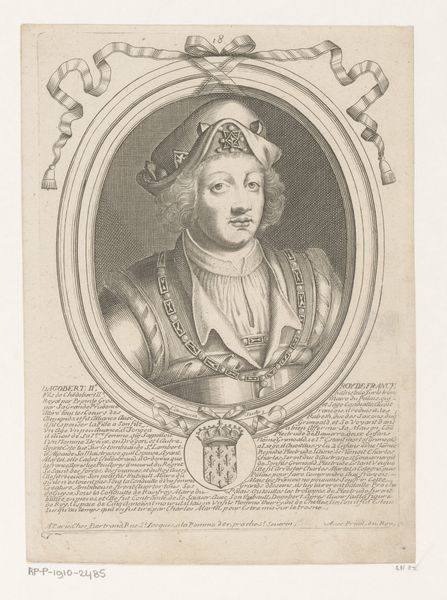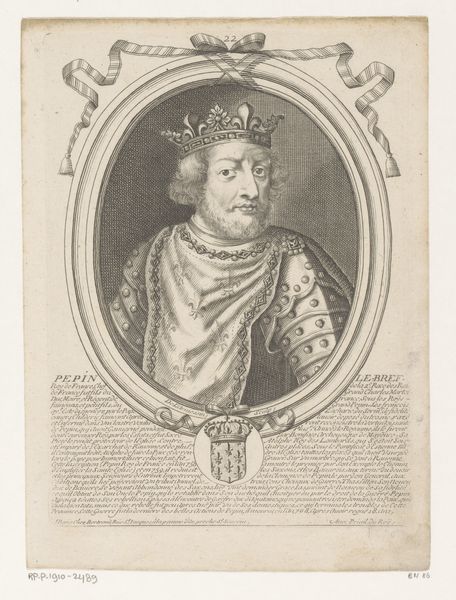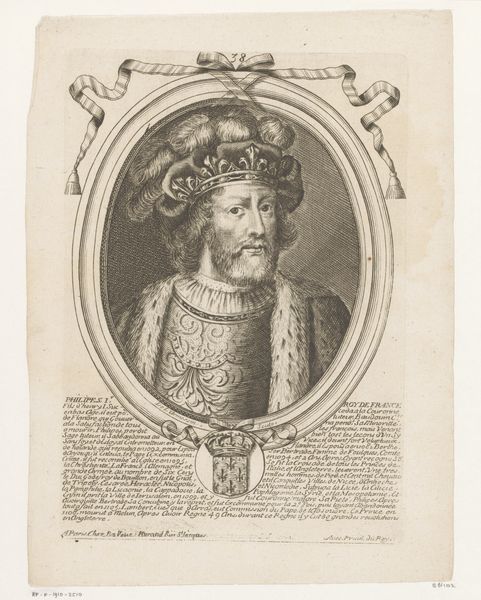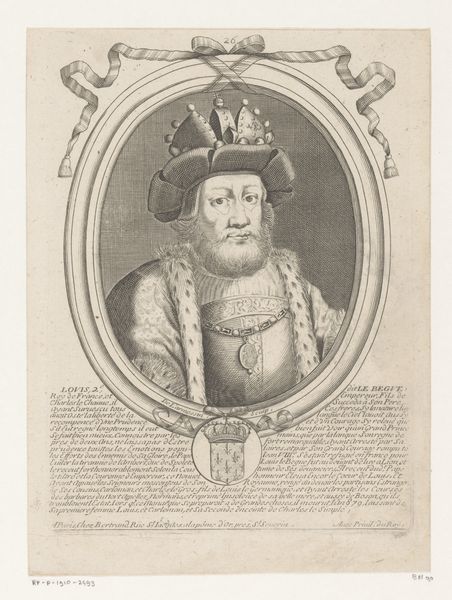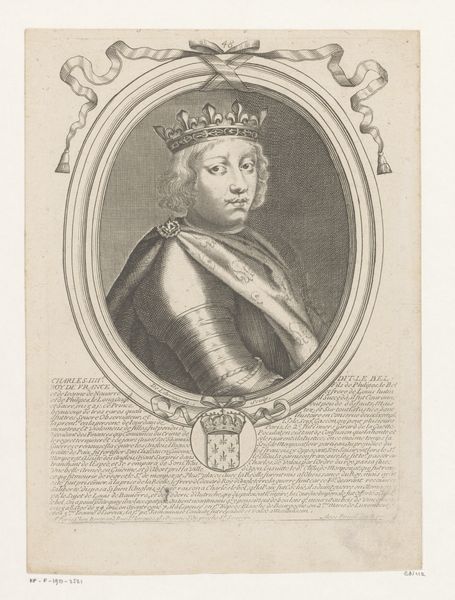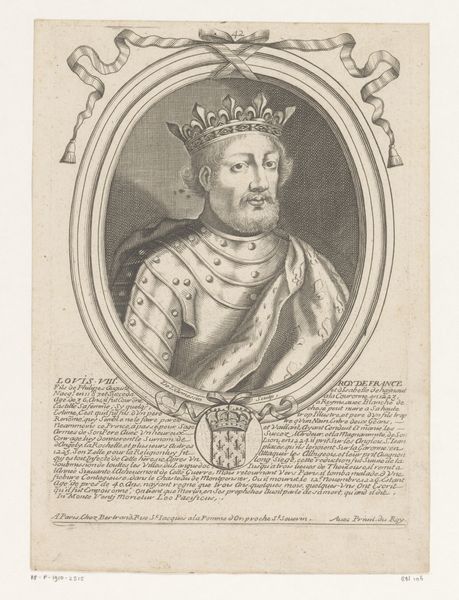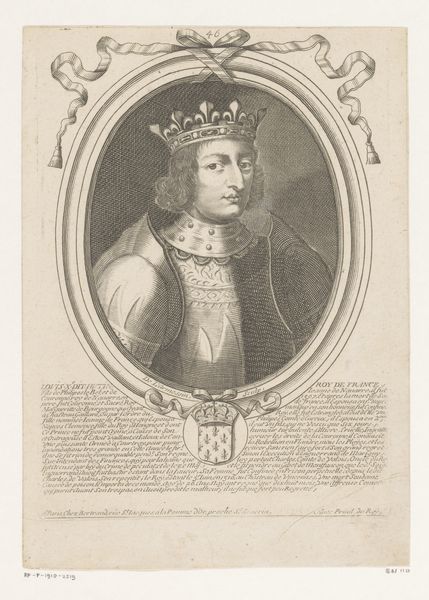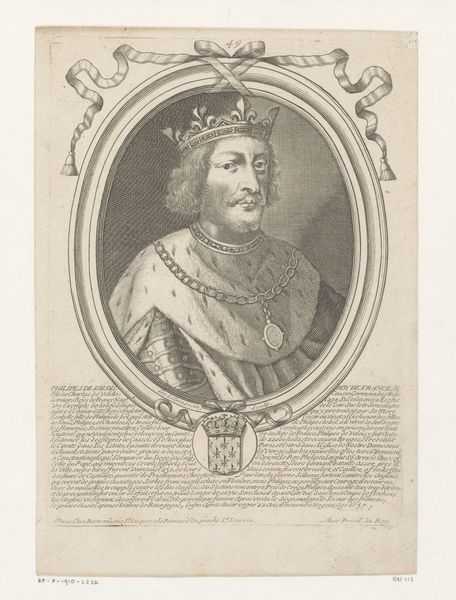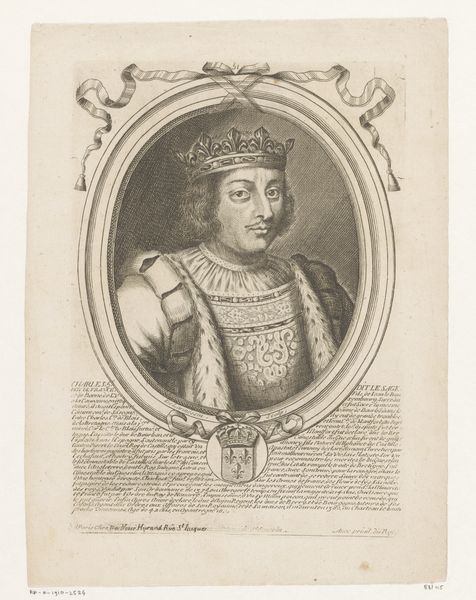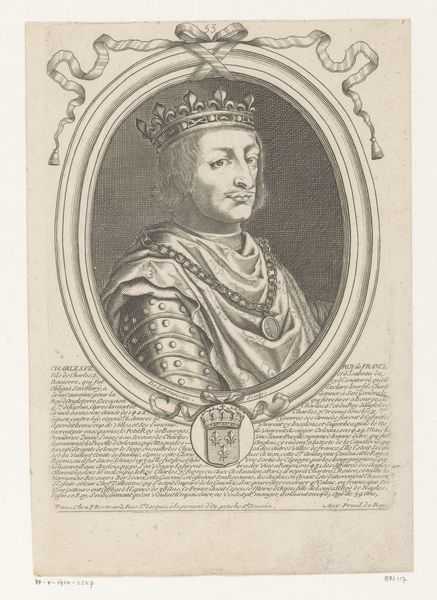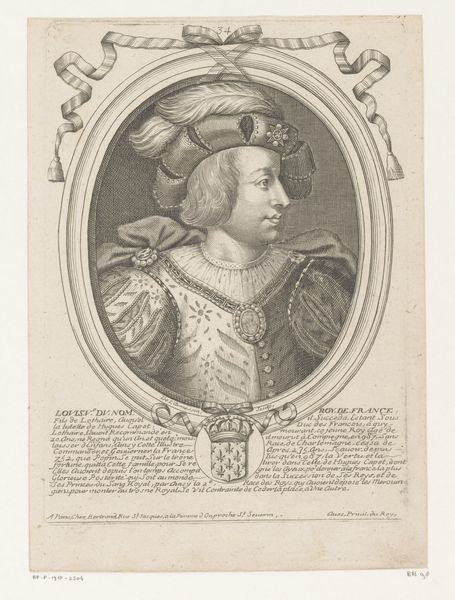
print, paper, engraving
#
portrait
#
baroque
# print
#
old engraving style
#
paper
#
history-painting
#
engraving
Dimensions: height 242 mm, width 172 mm
Copyright: Rijks Museum: Open Domain
Curator: I’d like to introduce "Portrait of Clovis III," an engraving on paper dating from between 1647 and 1678, attributed to Nicolas de Larmessin I, housed here at the Rijksmuseum. Editor: My first impression is one of intense formality—rigid pose, elaborate frame, it all speaks of the Baroque era's grandeur. Though, something about the face seems almost… child-like? Curator: Indeed. It's a history painting, or rather, a history print—intended to inform and to aggrandize. The inscriptions surrounding the image detail Clovis III’s supposed virtues, his military achievements, and his lineage. The visual language serves the political one. The choice to frame Clovis as a young, almost cherubic figure might have served to soften his image and evoke pity. Editor: From a formal perspective, look at the textures! The rendering of the feathered hat, the intricate detailing on the armor, it's a showcase of the engraver's skill. But tell me, what's the historical basis here? Clovis III reigned very briefly. Is he typically portrayed with this level of...grandeur? Curator: That’s precisely the interesting point. Clovis III ruled for only a short time, and his reign was turbulent. This image, then, participates in a process of constructing historical memory. It emphasizes legitimacy, continuity of rule, and valor, even when history provides little evidence to support those claims. The engraving serves a specific political purpose. It solidifies a King's role even after his brief reign has ended. Editor: So, it's less a straightforward depiction and more a symbolic representation— Clovis as an emblem of French royalty. I can almost overlook that rather uninspired crown now, since understanding it as more of a symbolic visual element. Curator: Exactly! Considering its historical context helps us see this as a tool of nation-building, forging a narrative about France’s royal heritage. It presents a carefully crafted image of authority at a particular historical moment. Editor: It's fascinating how looking past face value shows us the social and political contexts intertwined within these careful artistic decisions. It transforms our reading of not just Clovis III, but what images can actually "do". Curator: Absolutely. Art provides a window into not just history, but into how societies choose to remember and represent that history.
Comments
No comments
Be the first to comment and join the conversation on the ultimate creative platform.
